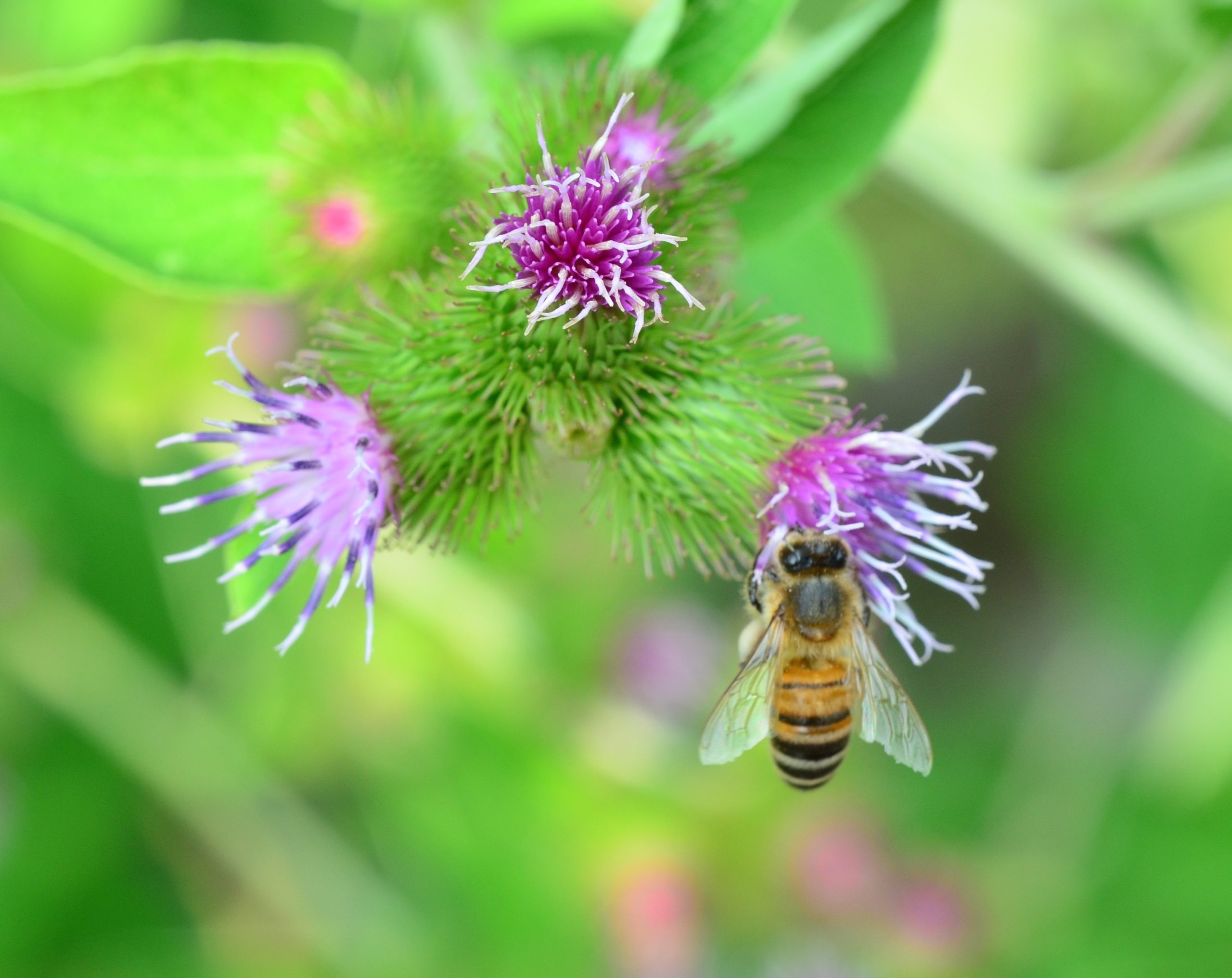
Like all living things, plants want to reproduce. Reproduction happens when a male fertilizes a female. Plants reproduce similarly by making seeds after being fertilized. In order for plants to make seeds, plants must first be pollinated. Pollination is the process by which the male part of a plant fertilizes the female part of another plant (of the same species). The male part of a plant produces pollen, which then must travel to the female part of another plant in order to fertilize it. Plants can’t pick up their feet and walk like other living animals. The male part of the plant relies on external forces to transfer the pollen to other plants, like bees.
Bees travel from one plant to another collecting nectar. This nectar is brought back to the hive and eventually turned into honey by the bees. While on their travels from plant to plant, bees and other pollinators brush up against the plant collecting pollen on their hairy bodies along the way. With each nectar collecting stop, they drop off pollen and continue to pick more up. As a result, the plants get pollinated and the bees get their nectar- a perfect symbiotic relationship. To help visualize how bees pick-up pollen, check out this video.
Without pollination, flowers and plants, including important food crops, would not be able to reproduce. In fact, honey bees contribute nearly $20 billion to the value of U.S. crop production. At the Great Lakes Bee company, we offer pollinating services to local farmers to pollinate their crops. In April, we pollinate for apricots, sweet cherries, peaches and plums. In May, it’s tart cherries, pears, and blueberries. And in May, we head over to the orchards to pollinate for some apples. Sometimes we even take them to California to pollinate almonds!
A single bee colony can pollinate 300 million plants a day. That is why it is so important we do everything we can to help increase bee populations and reduce the use of pesticides. Become a beekeeper in your community today to help your local bee population efforts. Give us a call to ask how you can get started.
